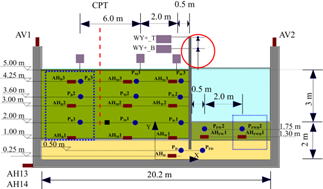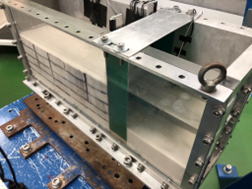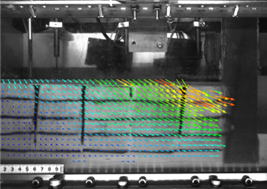Research Theme
- Soil Liquefaction Mechanism
Population and assets in Japan are heavily concentrated in low-lying areas that are at high risk of liquefaction in the event of a major earthquake. While ground liquefaction rarely has a direct impact on human life, it can cause severe damage to essential infrastructure such as electricity, telecommunications, and water and sewage systems, as well as disaster prevention facilities like coastal and river levees, and key logistics infrastructure including airports, ports, and roads—resulting in serious disruption to daily life.
Research on liquefaction began in earnest around the world following the 1964 Alaska and Niigata earthquakes. In past studies and engineering practice, simplified assumptions have often been made to facilitate understanding of the phenomenon, leading to many important findings. For example, ground behavior has typically been analyzed under the assumption of undrained conditions, where water movement within the soil is neglected. However, in reality, even during the brief shaking of an earthquake—lasting only a few tens of seconds—pore water can migrate, meaning that the undrained condition is not always satisfied. In addition, gravelly soils with larger particle sizes have been considered less susceptible to liquefaction. Yet, recent insights suggest that liquefaction susceptibility is not determined solely by particle size, but rather by the volumetric deformation characteristics of the soil.
Bridging the gap between these simplified assumptions—made for practical application—and the more complex behaviors observed in real-world ground conditions is essential for deepening our understanding of liquefaction mechanisms. Ultimately, such advancements will contribute to further improving the accuracy of current liquefaction assessment methods.
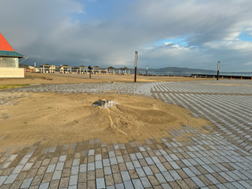
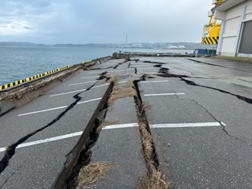
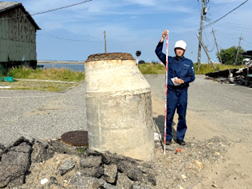

- Liquefaction Countermeasures
Reducing the risk of damage caused by liquefaction is critically important
for ensuring the stability of our social infrastructure and daily life.
Over the years, various countermeasures against liquefaction have been
developed, each with its own advantages and disadvantages, and each suitable
for different site conditions. For example, our laboratory has been working
on the development of liquefaction countermeasures specifically designed
for river levees. We have conducted performance evaluations of excess pore
water pressure dissipation methods using gravel drains and sheet piles
equipped with drainage functions. These countermeasures have been found
to be effective when the design appropriately accounts for the permeability
and compressibility of the ground and optimizes the treated area. However,
these methods also come with a drawback: while they are effective in mitigating
liquefaction, they often result in unavoidable ground settlement. Currently,
we are conducting research to accurately evaluate and address this drawback.
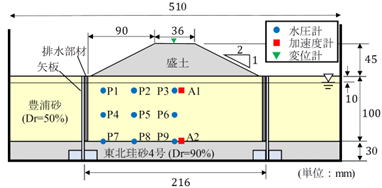
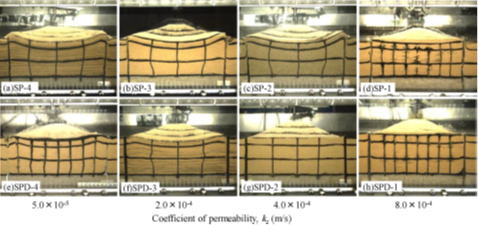
- Large-Scale Ground Flow Induced by Liquefaction
In September 2018, a devastating earthquake struck Sulawesi Island in Indonesia, triggering multiple large-scale ground flow phenomena. In some areas, the flow distance reached up to 1 kilometer—far exceeding previously recorded cases, which typically ranged from a few meters to several tens of meters. The disaster resulted in the loss of over 2,000 lives. In 2019, our laboratory conducted an extensive field investigation, which included trench excavations at seven locations, UAV-based aerial surveys, and interviews with local survivors.
More recently, in December 2023, a similar large-scale ground flow event occurred following the earthquake in Jishishan, China. The similarities in triggering mechanisms between the two events have drawn significant attention. At our laboratory, we are actively working to elucidate the mechanisms behind these unprecedented ground flow phenomena through a combination of element testing of soil materials, centrifuge model experiments, and other advanced techniques.
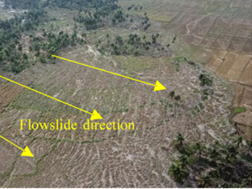
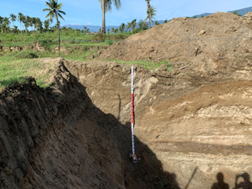
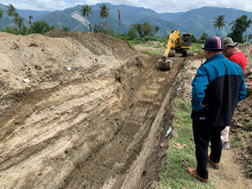
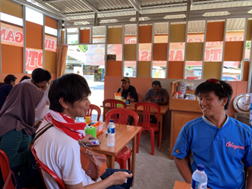
- Stability of River Levees
Among the infrastructure responsible for flood control, river embankments are the most critical structures. By preventing breaches during floods and stopping inundation, they protect the lives of those living within the levee. The total length of river embankments extends to approximately 20,000 km for national rivers, and more than ten times that for prefectural rivers. River embankments have been raised and widened repeatedly since the Meiji era, and currently, they are being developed to withstand high water events occurring approximately once every 100 years for national rivers and once every 30 years for prefectural rivers. However, it is expected that it will still take several decades to achieve this goal. On the other hand, when inspecting the quality of the already completed embankments, it is found that many of those constructed during the Meiji and Showa periods did not use appropriate materials and were insufficiently compacted. There are many sections where doubts exist about whether they can consistently stop water during high water events. Improving the safety of current river embankments is therefore an urgent issue. Our laboratory focuses on one of the failure modes of river embankments—piping phenomena in the foundation soil of embankments. We are working to clarify the mechanisms behind this phenomenon through various scale model experiments and numerical simulations. Additionally, we are actively conducting field surveys using RTK-GNSS and drones to acquire 3D DEMs of embankment surfaces, measuring embankment strength through simplified dynamic cone penetration tests, and observing foundation soils through trench excavations.
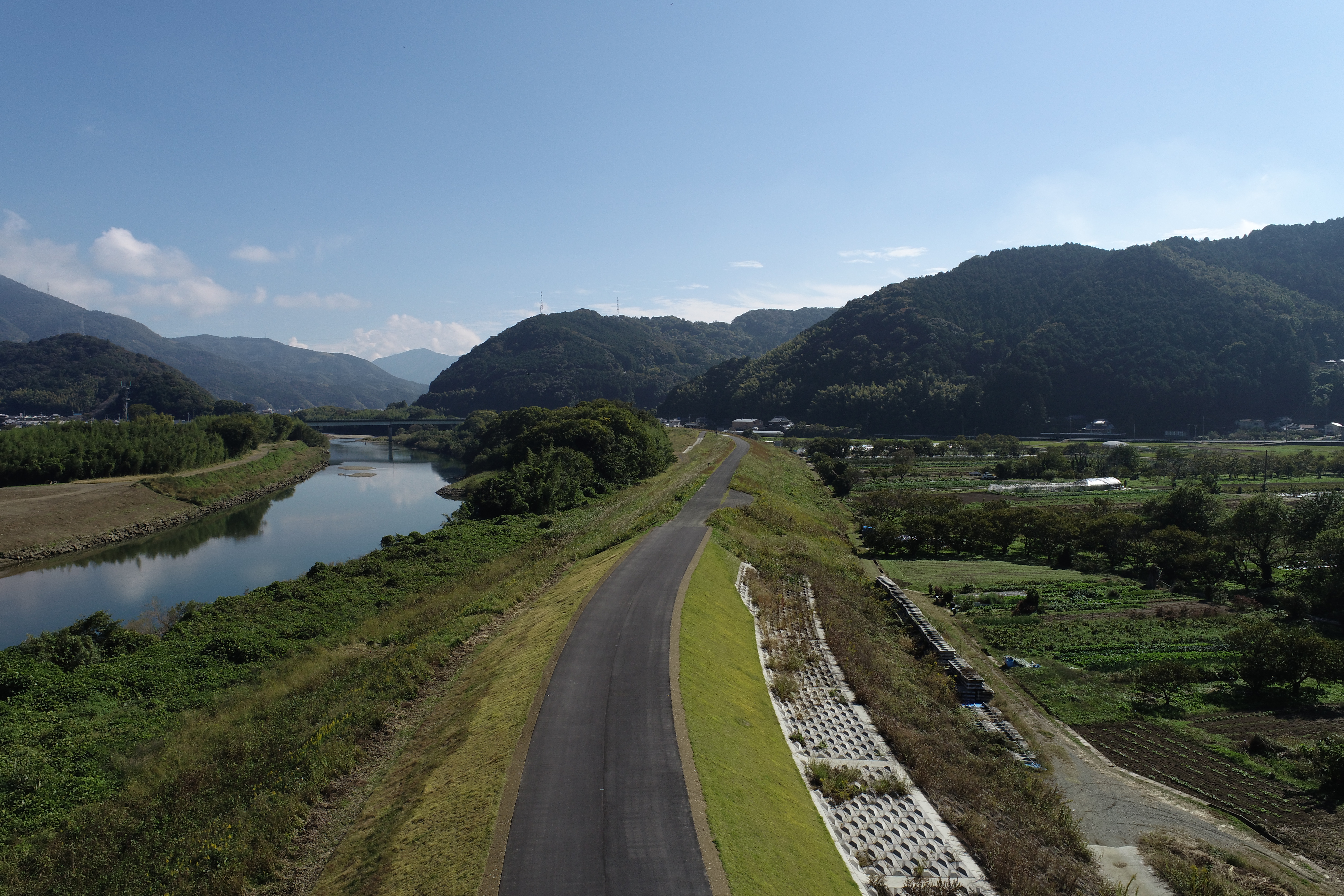
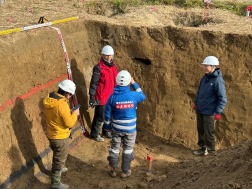
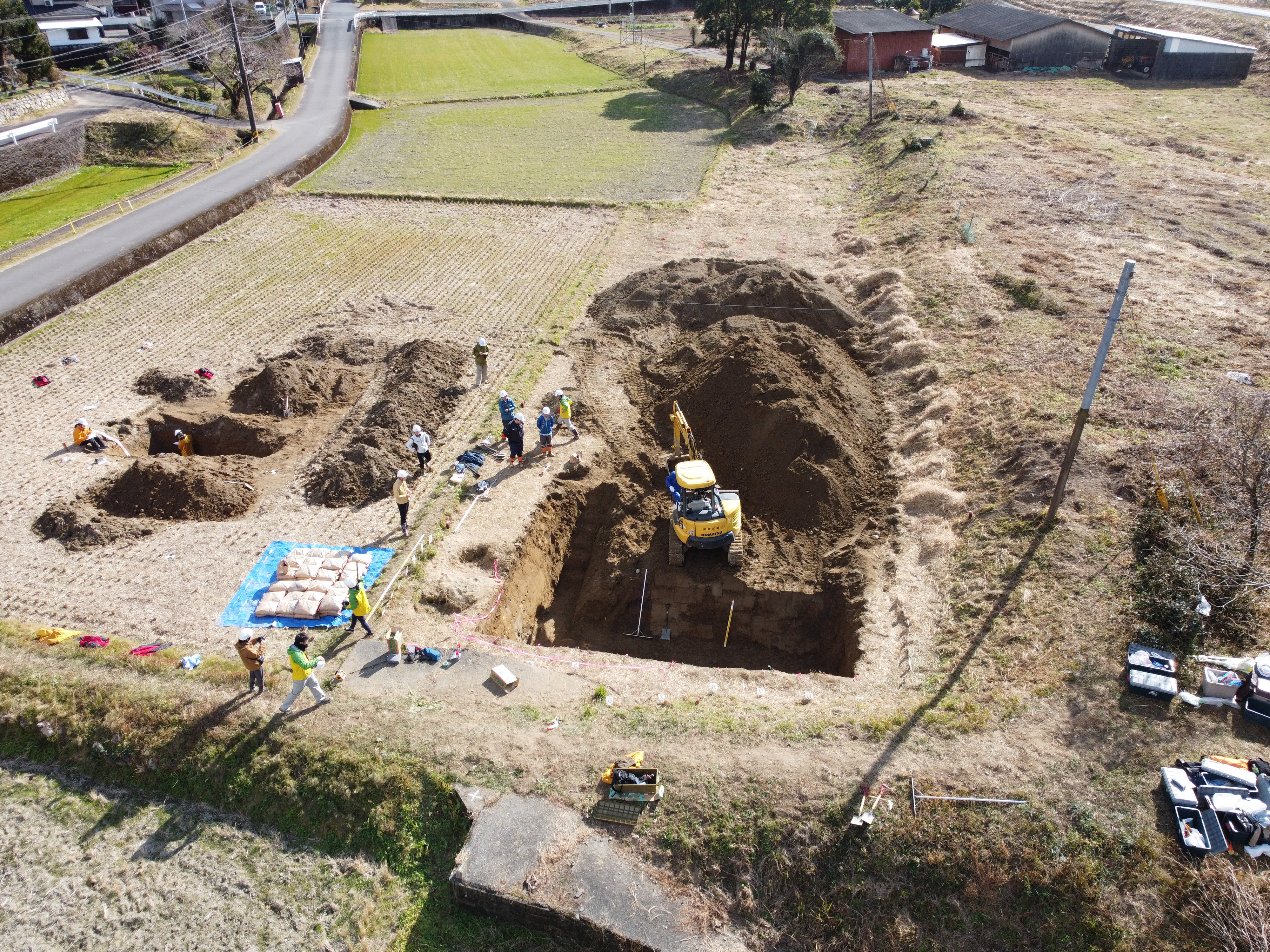
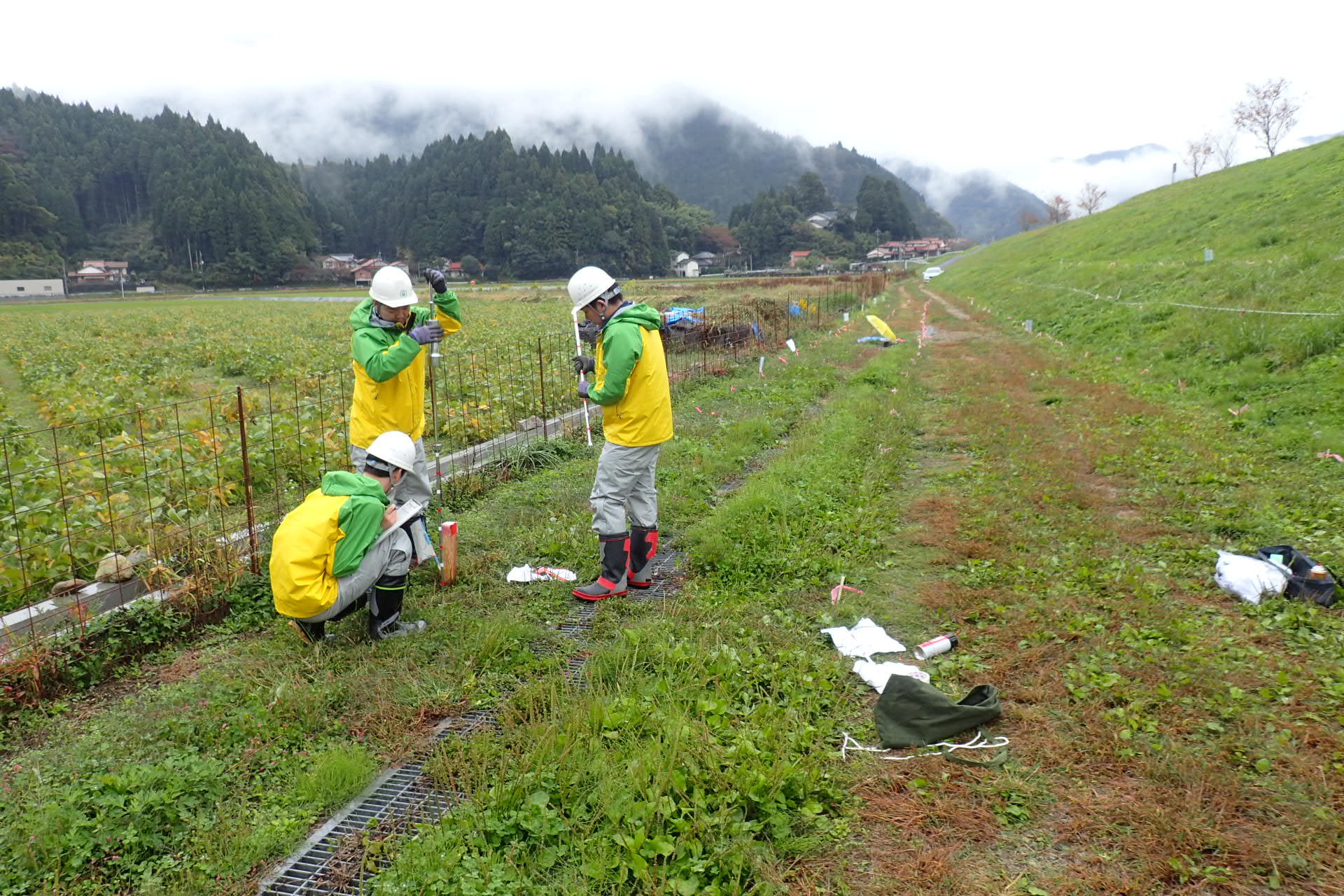
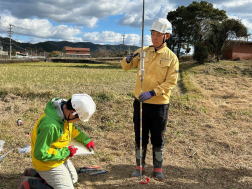
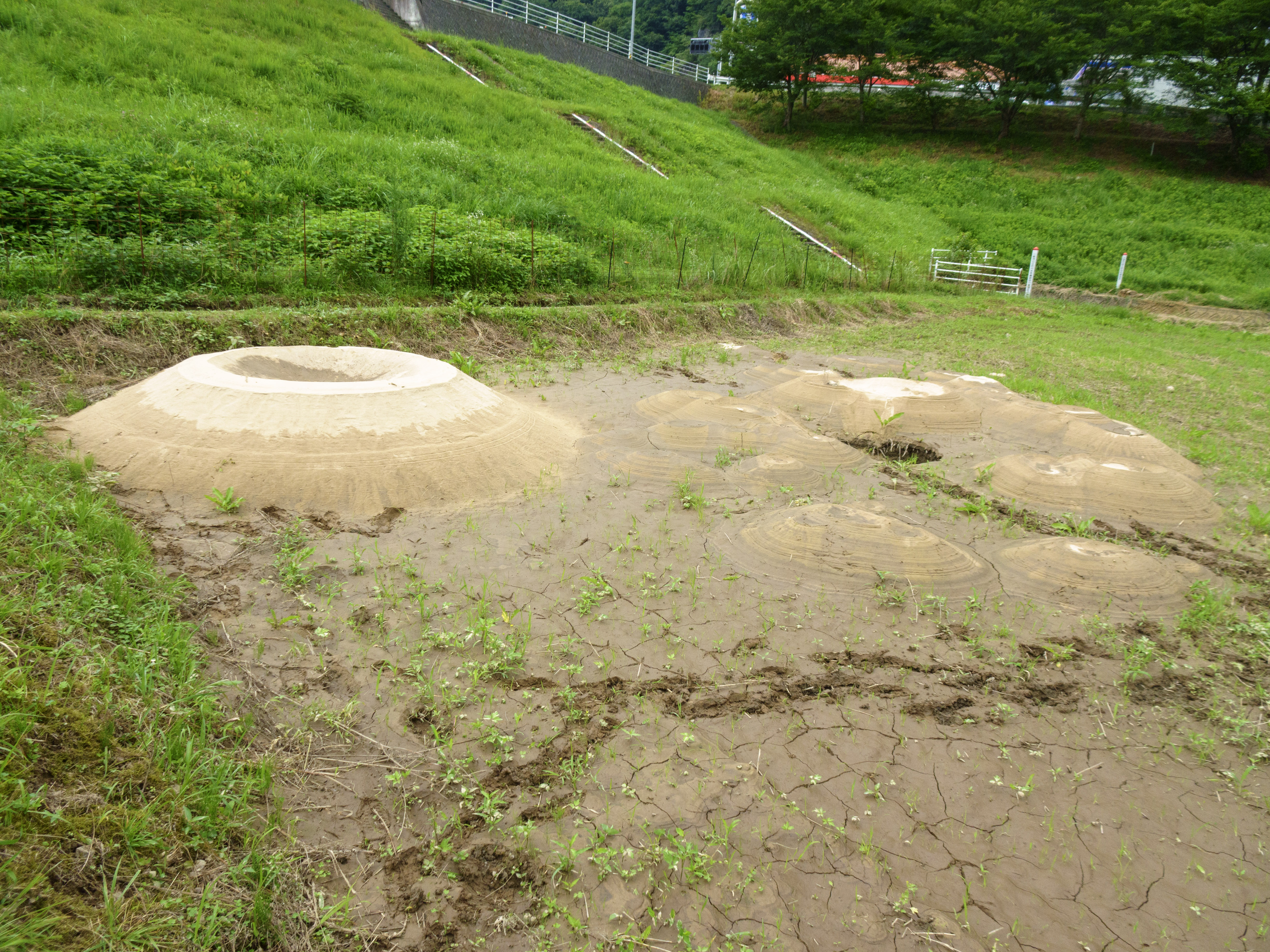
- Maintenance and Rehabilitation of Buried Pipelines
Within the ground, pipelines are laid to transport drinking water, industrial water, and agricultural water. Among these, agricultural water accounts for approximately two-thirds of Japan's total water usage, and the total length of agricultural water pipelines is said to reach 400,000 km. These agricultural pipelines are facing severe deterioration, with an increasing number of pipelines exceeding their expected lifespan. Deteriorated pipelines not only cause sudden accidents due to material degradation and strength loss but also lead to a decrease in flow capacity and an increased risk to natural disaster resilience, such as large-scale earthquakes. Therefore, upgrading these pipelines has become an urgent issue.
To replace aging pipelines, excavation of the ground is required to remove the existing pipes and install new ones. However, this method not only incurs high costs but also disrupts traffic for extended periods and generates construction waste. On the other hand, trenchless rehabilitation methods restore the original pipeline function by constructing a new pipe inside the existing pipeline without excavating it. The newly constructed pipe inside the existing one is called a "rehabilitated pipe," and its types vary depending on the material and construction method. Pipeline rehabilitation has developed in the field of sewer systems, but its applicability to agricultural pipelines, which have more stringent operational conditions, has not been fully verified. Generally, agricultural pipelines have a larger diameter, more bends, and are pressurized at several hundred kPa for water delivery. In such a specialized environment, there are many challenges, such as how to estimate the residual strength of existing pipes and how to incorporate long-term creep characteristics into the design.

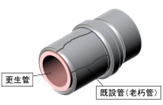

- Maintenance and Renovation of Reservoirs
The history of agricultural ponds dates back to ancient times, with the
Sayama Pond, constructed in the 600s, being considered the oldest agricultural
pond in Japan. In Japan, where rice paddy farming is predominant, numerous
agricultural ponds were built as water sources along with the expansion
of fields and the development of civil engineering technologies, and their
number totals approximately 150,000. About 70% of these ponds were constructed
before the Edo period, or their construction dates are unknown. It is inferred
that these ponds were built through trial and error based on empirical
techniques. In other words, like river embankments, the selection of materials
was inadequate, and compaction management was not properly carried out,
resulting in significant challenges such as seismic resistance. In order
to efficiently repair the large number of aging ponds, it is necessary
to consider approaches such as partial repairs, such as those at the top
of the embankment, rather than large-scale repairs that target the entire
embankment. Our laboratory, in collaboration with Kobe University and the
National Agriculture and Food Research Organization (NARO), is working
on the development of new repair methods.
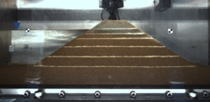
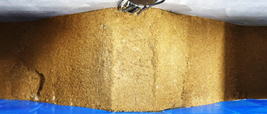
- Improvement of Centrifuge Model Experiment Techniques
Centrifuge modeling experiments are a unique experimental technique in
geotechnical engineering, where centrifugal acceleration several times
greater than gravity is applied to scaled-down models, allowing the reproduction
of real-world soil behavior. While centrifuge modeling experiments are
powerful tools, they also come with numerous constraints. Since the apparatus
is constantly rotating at high speed during the experiment, it is impossible
for humans to approach, and auxiliary equipment must be remotely operated.
Compared to experiments in a gravity field, soil models are smaller, which
means the measuring instruments and cameras used must also be compact.
Additionally, these devices must be strong enough to withstand the high
centrifugal accelerations. In recent years, with the advancement of technology,
cameras have become more compact and high-performance, and the capabilities
of mini-PCs that can be mounted on the centrifuge equipment have also improved.
It is important to continuously improve centrifuge modeling techniques
by applying these latest technologies. As part of this effort, our laboratory
has been involved for many years in LEAP (Liquefaction Experiments and
Analysis Projects), an international project focused on centrifuge modeling
techniques. LEAP aims to verify and validate centrifuge experiments related
to liquefaction, where 10 research institutions around the world create
the same soil model and conduct synchronized experiments to compare the
results. Our laboratory will continue to contribute to the improvement
of global centrifuge modeling techniques through our participation in this
project.
